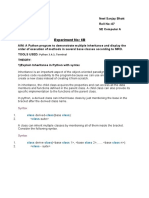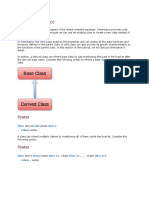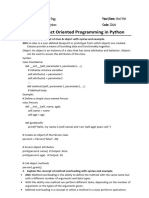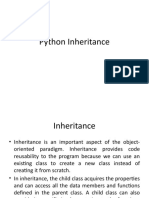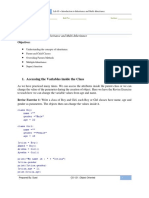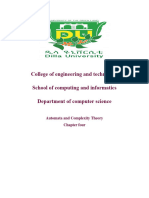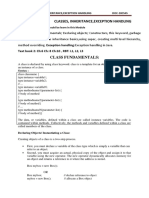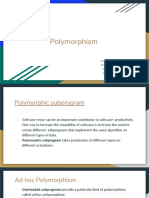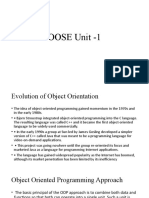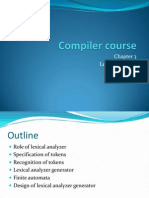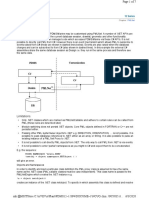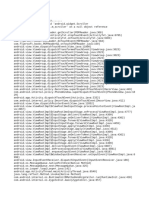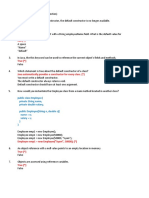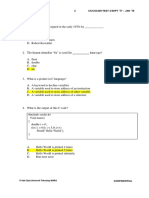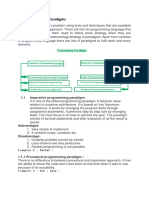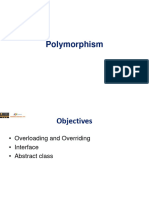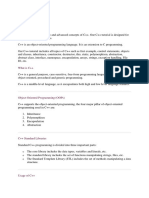0% found this document useful (0 votes)
20 views5 pagesClass and Object
The document provides an overview of Object Oriented Programming (OOP) in Python, explaining concepts such as classes, objects, inheritance, and multiple inheritance. It includes examples of defining classes, creating objects, and utilizing inheritance to enhance code reusability and maintainability. Key benefits of inheritance are highlighted, along with practical code snippets demonstrating these principles.
Uploaded by
rj0110865Copyright
© © All Rights Reserved
We take content rights seriously. If you suspect this is your content, claim it here.
Available Formats
Download as DOCX, PDF, TXT or read online on Scribd
0% found this document useful (0 votes)
20 views5 pagesClass and Object
The document provides an overview of Object Oriented Programming (OOP) in Python, explaining concepts such as classes, objects, inheritance, and multiple inheritance. It includes examples of defining classes, creating objects, and utilizing inheritance to enhance code reusability and maintainability. Key benefits of inheritance are highlighted, along with practical code snippets demonstrating these principles.
Uploaded by
rj0110865Copyright
© © All Rights Reserved
We take content rights seriously. If you suspect this is your content, claim it here.
Available Formats
Download as DOCX, PDF, TXT or read online on Scribd
/ 5
























